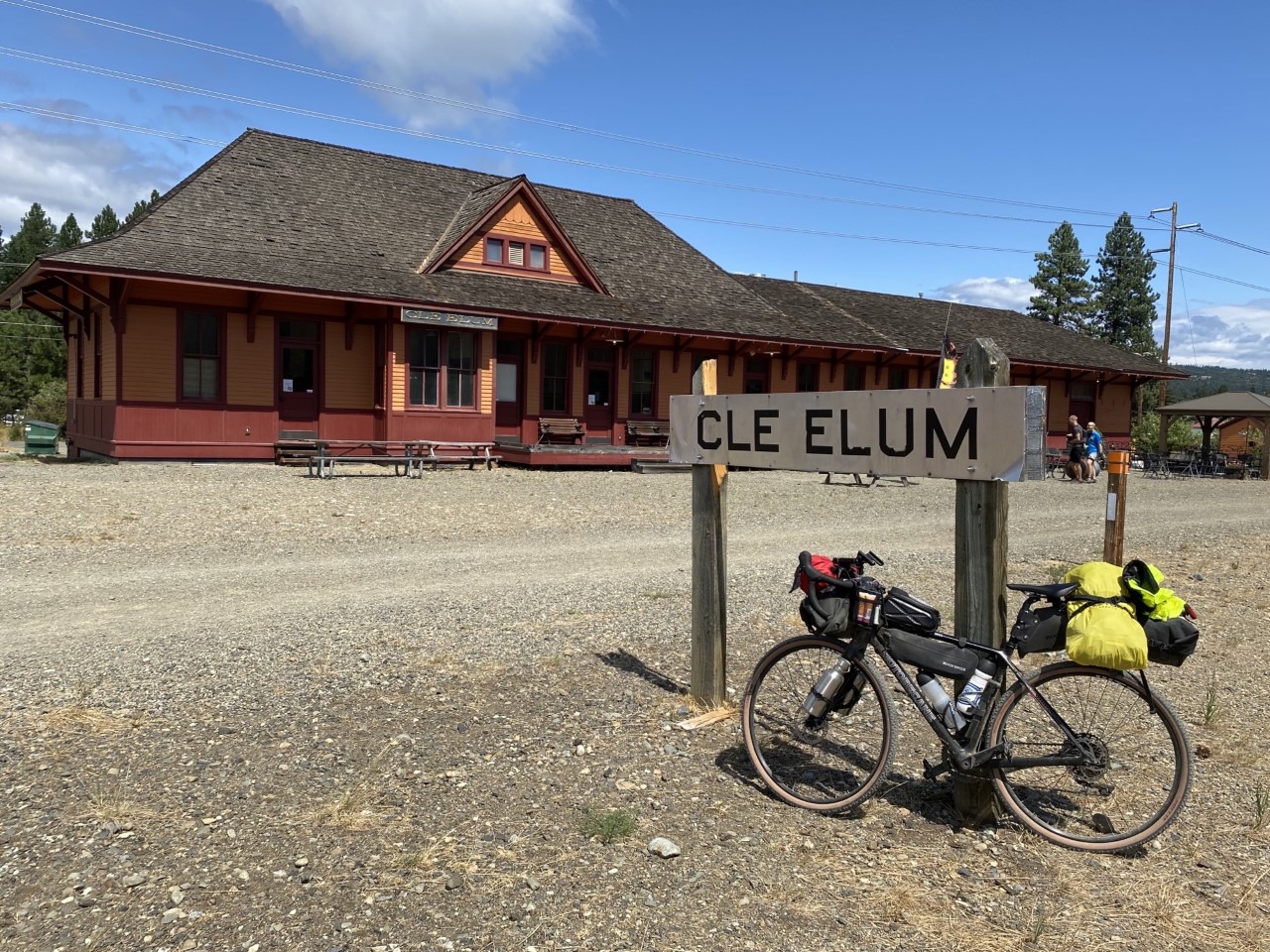The seven day gravel ride across Washington, started in drizzle and ended in 102 degrees. We carried freeze-dried food and camping gear for our self-supported ride in addition to extra clothing, bars, electrolytes, tools, etc. While it was not our intent, the trip became a great testing ground for gravel bags vs. panniers. Five of us set up our bikes with gravel bags consisting of a handle bar bag, a frame bag, top bar bag and rear bag that resembled an exhaust pipe. The other two riders used a rear wheel rack that carried a pannier bag on each side and a bag on top. Rolf did not use a frame bag freeing up space for two large water bottles. Karl used a frame bag and had very little on his handle bars which proved helpful in rough terrain.

Rolf carried the heaviest load, weighing in at 66 pounds (bike & gear). His pannier setup allowed him to keep a lot of items out of the elements and the weight distribution was lower than with the rear gravel bag setup. My load was a full 10 pounds lighter, mainly because I ran out of places to stash things. Much to my surprise the pannier setups proved to be more efficient and trouble free. See below the break down of our experience with hauling gear over 7 days in rain, dust and rough terrain.

Comparing bag setups
We will address the different styles of handle bar bags in a future discussion. Today, I will focus on the rear bag setups. Gravel bags are fairly new on the scene and were designed specifically to sit behind the rider providing a sleek profile. There are several advantages to the design. They are light and the thin profile avoids contact with objects on narrow trails and they have minimal wind drag. The most common styles fasten to the seat post and seat rails. Items are stuffed into the bag which can be expanded almost 2 feet.
We experienced a number of frustrations with the rear gravel bags. First, packing the bags required planning and a lot of trial and error. Heavier items should be packed first and not extend beyond the reinforced bottom or you will experience a droopy bag. The constant bouncing and vibration of trails caused the straps to loosen and slip. A droopy bag or loose straps allowed the bag to bounce on the tire. My tire literally wore through the bottom of my bag and damaged the bag that held my tent poles. Half way through the trip, we learned a few tricks to keep the bags more stiff and off the tire. One valuable lesson was to tie a half hitch behind the buckle after it was tightened, so it physically couldn’t move. Another issue was space. The bags held barely more than one pannier bag, so we found ourselves having to tie bags on top which created other issues. The riders with fully loaded rear gravel bags with bags tied on top were constantly stopping to readjust the load, straps or ties. On rough terrain or sand, the rear bag would start to wag like a dog’s tail and make it more difficult to hold a line. Finally, the inconvenience of unloading the rear bag to get to items was inefficient and actually frustrating in the rain. Based on our experience, the rear gravel bag is best for an overnighter or weekend trip that doesn’t require the bag to be fully extended or have gear placed on top. I would have kept my bag for such occasions, except mine now has a hole in the bottom! (Okay, I am cheap and will probably duct tape it for dry weekend trips)
Panniers are definitely heavier and a more expensive setup than a rear gravel bag. I would argue it is worth the investment for trips over 2-3 days. This is coming from the group’s most frugal consumer. Neither rider with panniers had to stop to adjust their loads. The panniers carried considerably more gear and I imagine that Rolf had to make many less choices about what to leave at home. Several of us envied his lightweight camping chair. Karl used a small frame bag and avoided placing anything on his handle bars keeping all his gear weight closer to the ground. Those of us with rear gravel bags were forced to put more weight on our handle bars, which probably contributed to a mishap I had riding into Ritzville. In addition to the stability and carrying capacity of panniers they are just way more convenient to use. They load from the top and can be easily removed to carry into a tent. The two bags and the top rail provide many packing options to minimize unpacking and repacking for the night whether you camp or stay in a motel.


Rolf quite happy with his pannier setup.

Jim’s bags unpacked.
He would probably do better with panniers.



Who would of thought that panniers would of been preferred.
Panniers rock for gravel trips. Easy no fuss bags. Easy on/off to separate from the bicycle as needed, and super easy to pack. I had food, stove, etc., on one side, and clothes etc., on the other.
I am a believer! 😀